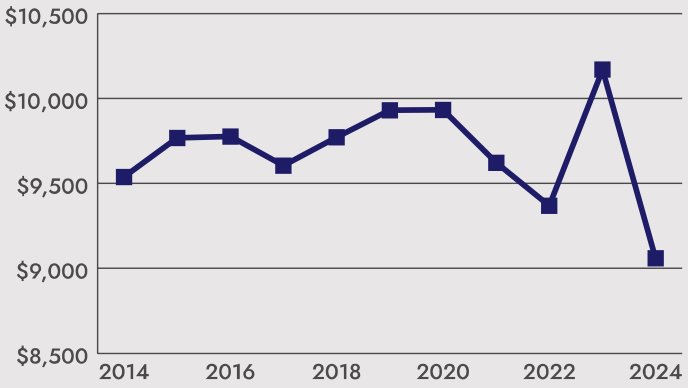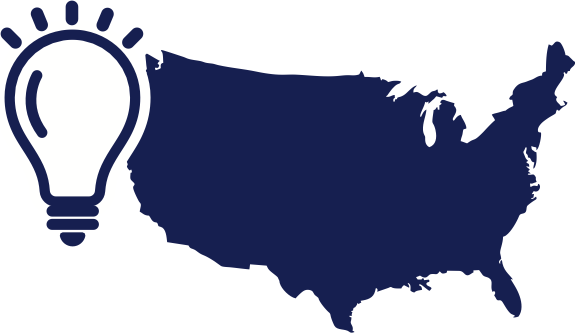Defending Our Future: Preventing a U.S. Science Recession
Members of Congress must:
- Prioritize agencies that support physical sciences in the completion of the FY2025 appropriation
- Include robust increases to those agencies in their member requests to appropriators for the FY2026 appropriations process
Federal funding for the science agencies directly impacts U.S. competitiveness and the domestic STEM workforce.
- Many of today's largest industries first started as federally funded fundamental research projects, including the internet, mobile cameras, GPS, MRIs, and AI.
- The federal government plays an essential role in creating America's STEM workforce, fueling the nation's innovation economy in all sectors.
Employment Sectors for New U.S. Physics PhDs in Non-Temporary Positions

Insufficient Funding is Constraining Innovation
Strategic allies and competitors are increasing their investments in fundamental R&D. Federal science agencies are increasingly required to do more with less funds due to insufficient appropriations, straining their ability to support the U.S. R&D ecosystem.
NSF Annual Appropriations
Budget Decline in Millions of Real 2024 dollars, 2014-2014

Source: AIP Federal Budget Tracker, inflation data from
Bureau of Labor Statistics, Appropriations bills for the National Science Foundations 2014, 2015, 2016
Unpredictable Funding and Continuing Resolutions Weaken U.S. Science
Failing to complete appropriations for 2025 will mean:
- Fewer future high-skilled STEM workers
- Project initiation delays, allowing competitors to gain ground
- Cuts to core research programs
- Termination of successful programs, like the Regional Innovation Engines funded in FY23
R&D Investments Fuel U.S. Competitiveness
STEM Workforce Readiness

>40,000 grad students & 8,000 postdocs supported by research awards from NSF and DOE Office of Science in 2022
>$5 Billion invested in workforce development programs in 2018-2022
Federal R&D Catalyzes American Innovation

>6,000 startups across 50 states funded by NSF, DOE, and NIST to bring federally-funded research products to the market in 2018-2023
Robust Investments in Federal R&D Is Essential to Future U.S. Innovation and Growth
For the U.S. to maintain its competitiveness, Congress must:
- Prioritize agencies that support physical sciences in the completion of FY2025 appropriations
- Include robust increases to those agencies in their member requests to appropriators for the FY2026 appropriations process
Not investing in R&D today weakens our economic competitiveness and national security, creating both financial and workforce deficits with long-term repercussions.